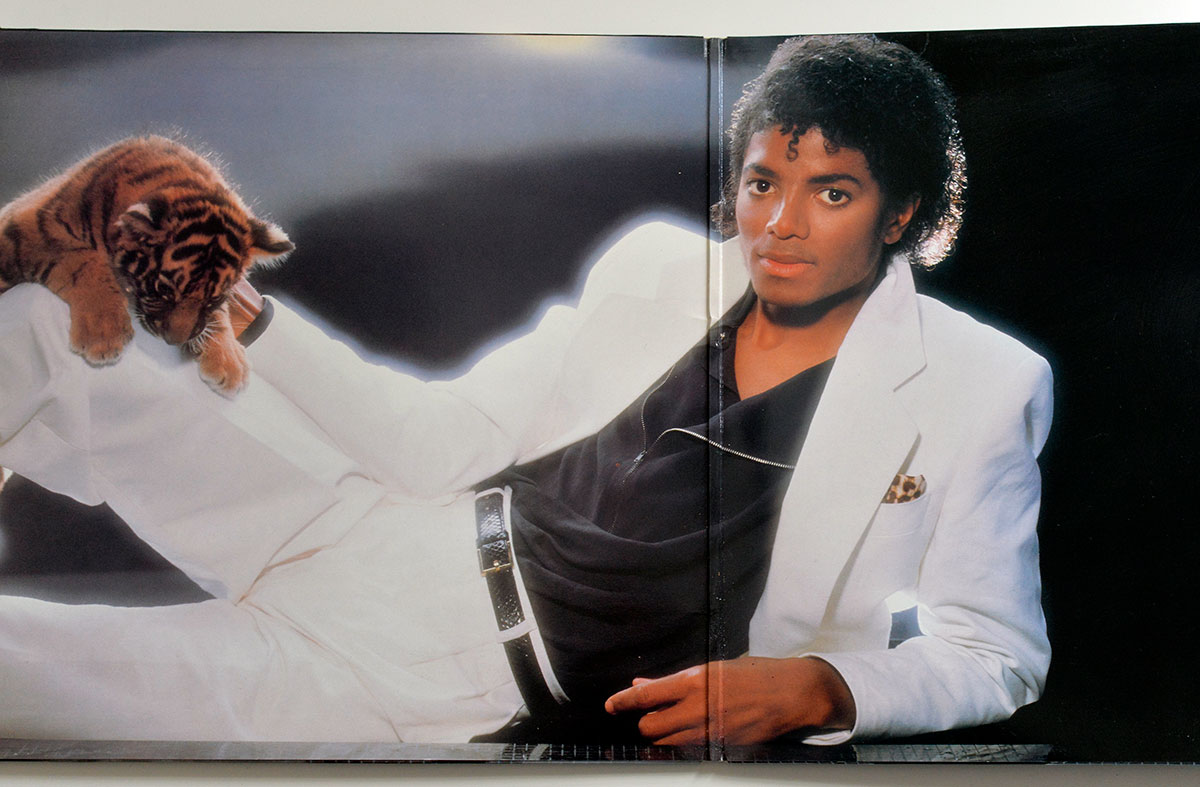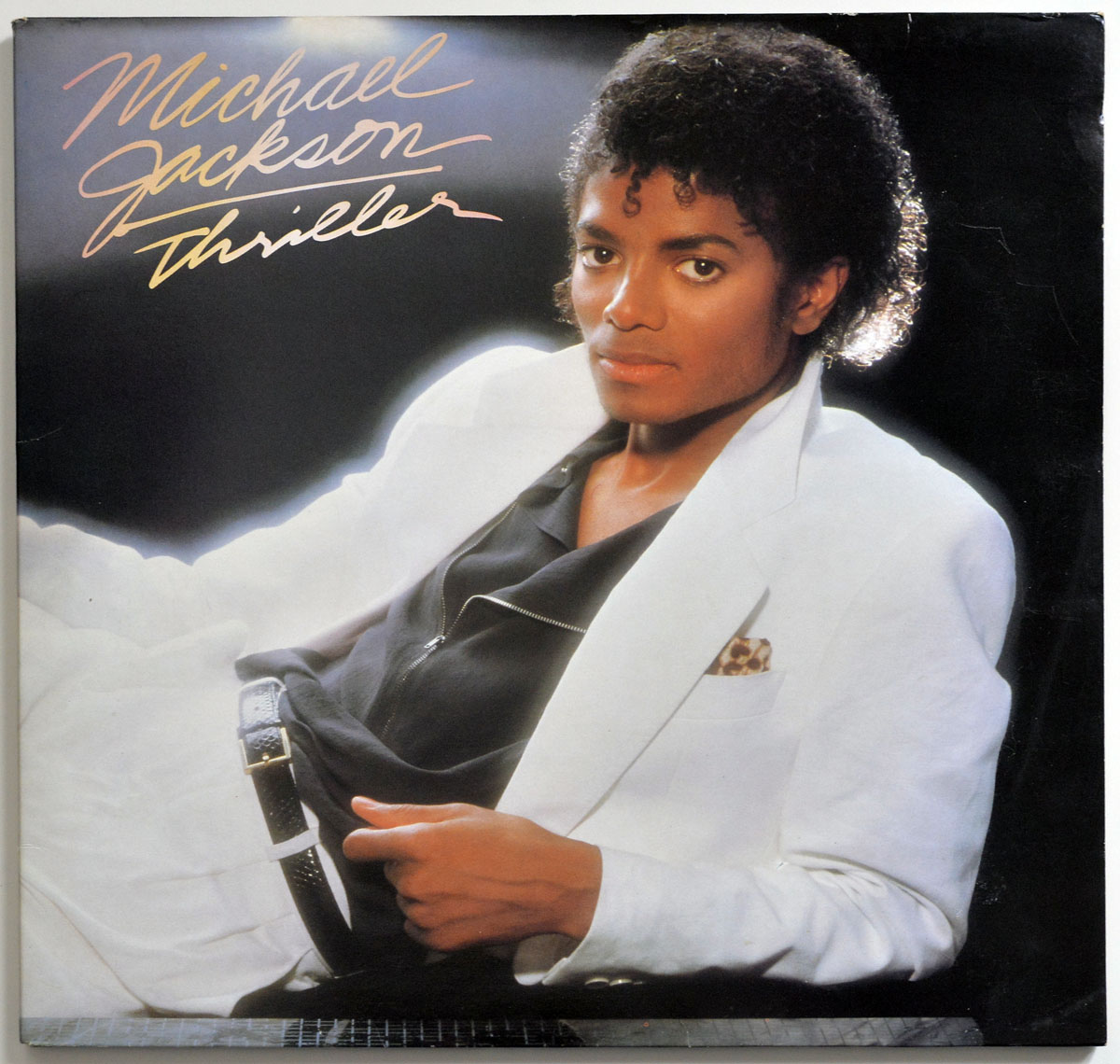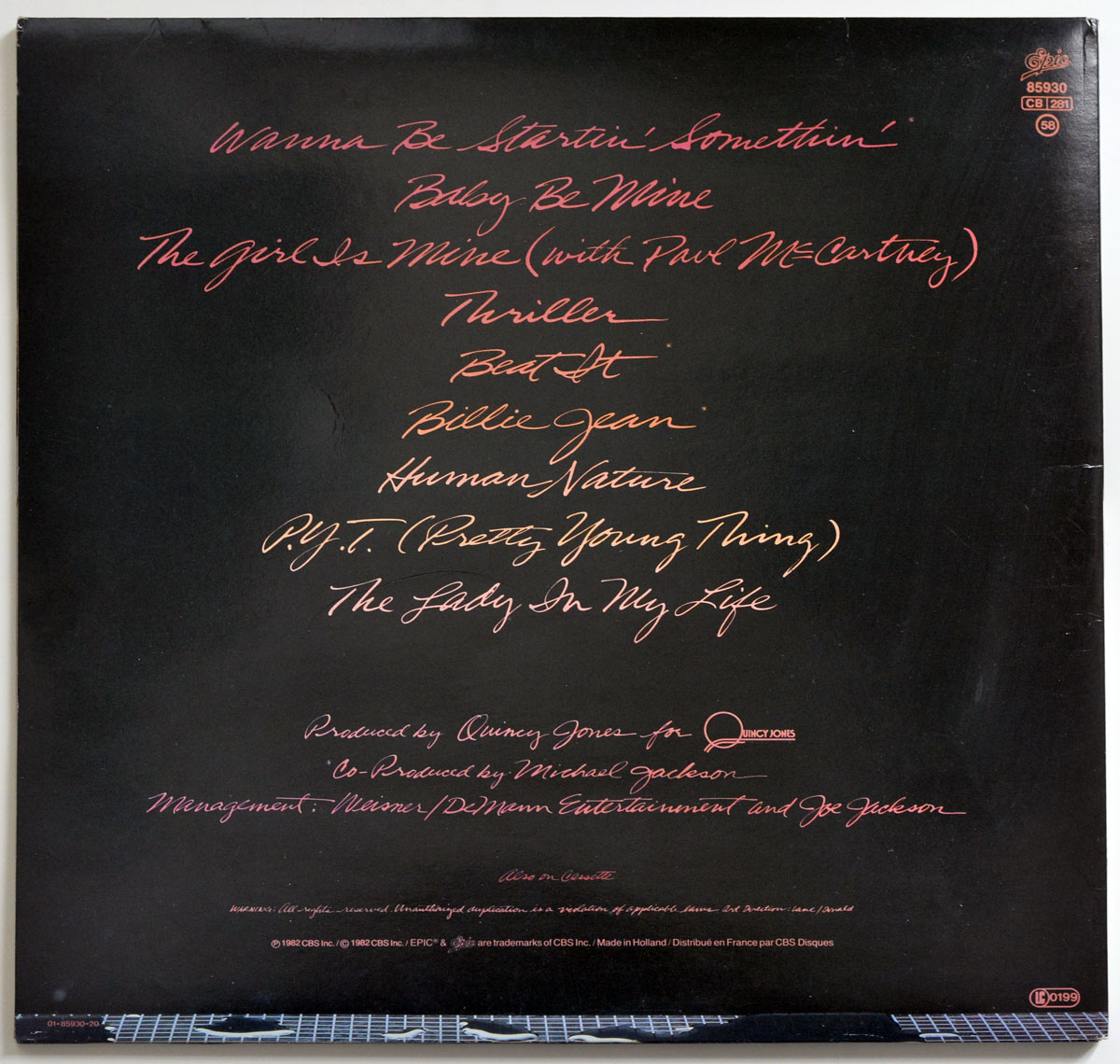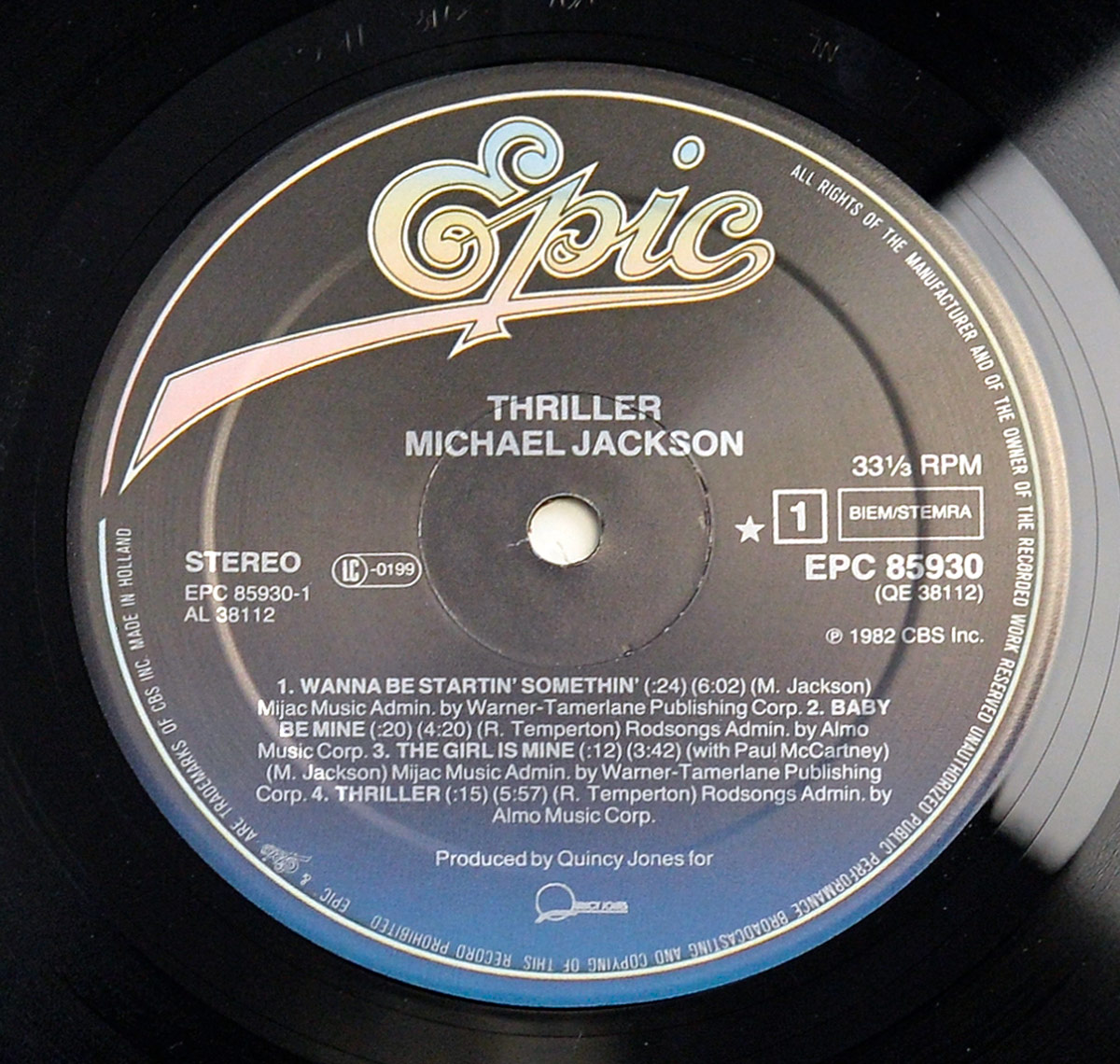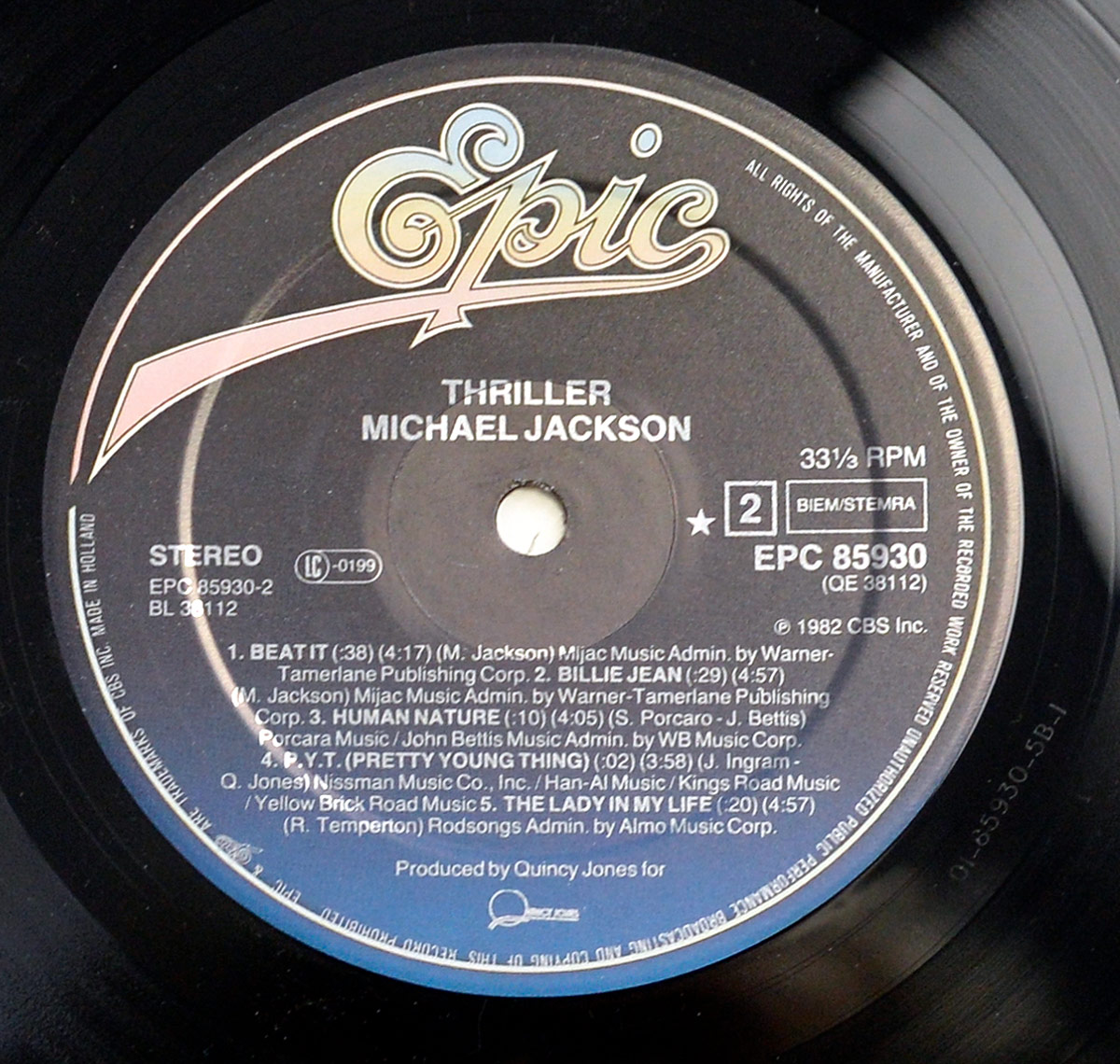"Thriller" Album Description:
Historical & Musical Context (circa 1982)
In the early 1980s, the world of popular music was shifting. Disco had burned out, and MTV was transforming how audiences consumed music — turning songs into visual experiences. Synthesizers, drum machines, and multi-track recording were becoming mainstream tools. Into this mix stepped Michael Jackson, already famous from “Off the Wall” (1979), but determined to make something bigger and more universal.
Released in late 1982, “Thriller” arrived during the dawn of the digital age and a time of Cold War tension, global economic uncertainty, and cultural experimentation. It fused pop accessibility with cutting-edge production, becoming a symbol of 1980s optimism and excess all at once.
Genre & Contemporaneous Bands
“Thriller” is a genre-blending album that mixes pop, funk, R&B, rock, and post-disco elements. It stands alongside the work of artists who were redefining pop and R&B at the time — Prince, The Time, and Chic on the funk side; Duran Duran and Eurythmics in the synth-pop sphere; and rock acts like Van Halen and Toto who bridged virtuosity with studio polish.
The album’s crossover appeal broke boundaries, proving that one artist could dominate pop, R&B, and rock charts simultaneously. It became a model for the multi-genre, globally marketed pop album.
Musical Exploration & Innovation
Each track on “Thriller” explores a distinct musical idea. “Wanna Be Startin’ Somethin’” opens with a dense funk groove and African-inspired chants, while “Beat It” pairs Eddie Van Halen’s fiery guitar solo with an R&B rhythm section. “Billie Jean” distills minimalist production into hypnotic perfection, its bassline instantly recognizable. The title track, “Thriller,” turns pop into cinematic spectacle, featuring thunderclaps, creaking doors, and Vincent Price’s theatrical narration.
Behind the sound, engineer Bruce Swedien employed an experimental “Acusonic Recording Process” — layering multiple stereo takes to create a deep, three-dimensional soundstage. The result was both clean and lush, a sonic texture that helped “Thriller” sound decades ahead of its time.
Key Persons in Making the Recording
Michael Jackson was not just the singer but a co-producer and arranger, crafting vocal harmonies and rhythmic layers with meticulous precision. Quincy Jones, his producer and mentor, coordinated an extraordinary team of musicians and technicians.
Bruce Swedien handled recording and mixing, shaping the album’s immaculate sound. Rod Temperton wrote the title track and contributed to its conceptual and lyrical depth. Guest musicians included Paul McCartney on “The Girl Is Mine” and Eddie Van Halen, whose credited solo on “Beat It” became one of rock’s most iconic moments. Members of Toto provided instrumental support on several tracks, connecting the worlds of AOR (album-oriented rock) and R&B.
Band Historical Events & Artistic Development
Though billed as a solo project, “Thriller” stands on the foundation of Michael Jackson’s long evolution from frontman of The Jackson 5 to global superstar. His earlier years with his brothers at Motown taught him stage discipline and vocal finesse, while his solo career allowed him to fuse showmanship with experimentation.
By 1982, Jackson was asserting full creative control. The success of “Thriller” marked his transformation from talented performer into cultural phenomenon — an artist who could dictate the direction of popular music itself.
Controversies Surrounding the Album
Despite its acclaim, “Thriller” was not without friction. MTV initially resisted airing “Billie Jean” due to racial bias, sparking a pivotal confrontation that led to broader inclusion of Black artists on the network. Once aired, the video’s success — directed by Steve Barron — became a defining moment for MTV.
The momentum continued with “Beat It,” directed by Bob Giraldi, and culminated in the landmark “Thriller” short film, directed by John Landis, which redefined what a music video could be. These collaborations turned MTV into a cultural powerhouse and made Jackson the first artist to truly merge cinema and pop music into one medium.
The chant in “Wanna Be Startin’ Somethin’” borrowed from Manu Dibango’s “Soul Makossa,” leading to later legal and ethical debates about credit and cultural borrowing. The album’s immense commercial success also raised questions about the balance between artistry and mass marketing. Some critics accused Jackson of over-polishing his sound, while others saw “Thriller” as proof that pop could be both sophisticated and universal. The debates only amplified its impact — controversy became part of its myth.
Conclusion
“Thriller” is more than a pop record — it’s a cultural hinge point. It captured the sound of a changing world, merging funk, rock, R&B, and cinematic imagination into a single global language. The album’s production, songwriting, and visual ambition redefined what an album could be.
Through precision and audacity, Michael Jackson and his collaborators created a work that still shapes how we hear — and see — popular music today.
